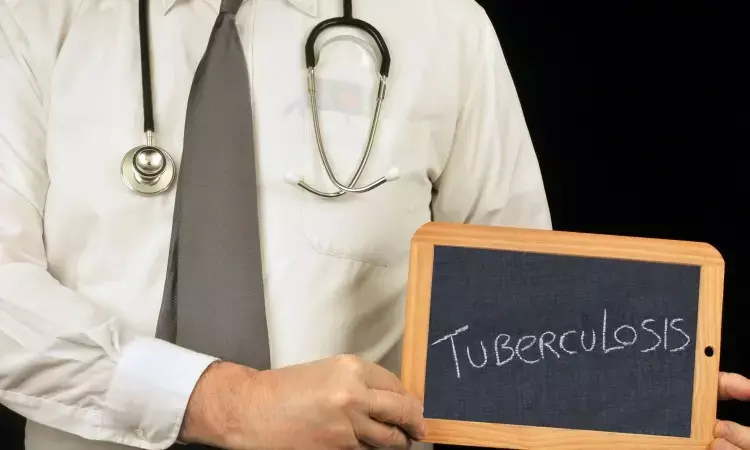- Home
- Medical news & Guidelines
- Anesthesiology
- Cardiology and CTVS
- Critical Care
- Dentistry
- Dermatology
- Diabetes and Endocrinology
- ENT
- Gastroenterology
- Medicine
- Nephrology
- Neurology
- Obstretics-Gynaecology
- Oncology
- Ophthalmology
- Orthopaedics
- Pediatrics-Neonatology
- Psychiatry
- Pulmonology
- Radiology
- Surgery
- Urology
- Laboratory Medicine
- Diet
- Nursing
- Paramedical
- Physiotherapy
- Health news
- Fact Check
- Bone Health Fact Check
- Brain Health Fact Check
- Cancer Related Fact Check
- Child Care Fact Check
- Dental and oral health fact check
- Diabetes and metabolic health fact check
- Diet and Nutrition Fact Check
- Eye and ENT Care Fact Check
- Fitness fact check
- Gut health fact check
- Heart health fact check
- Kidney health fact check
- Medical education fact check
- Men's health fact check
- Respiratory fact check
- Skin and hair care fact check
- Vaccine and Immunization fact check
- Women's health fact check
- AYUSH
- State News
- Andaman and Nicobar Islands
- Andhra Pradesh
- Arunachal Pradesh
- Assam
- Bihar
- Chandigarh
- Chattisgarh
- Dadra and Nagar Haveli
- Daman and Diu
- Delhi
- Goa
- Gujarat
- Haryana
- Himachal Pradesh
- Jammu & Kashmir
- Jharkhand
- Karnataka
- Kerala
- Ladakh
- Lakshadweep
- Madhya Pradesh
- Maharashtra
- Manipur
- Meghalaya
- Mizoram
- Nagaland
- Odisha
- Puducherry
- Punjab
- Rajasthan
- Sikkim
- Tamil Nadu
- Telangana
- Tripura
- Uttar Pradesh
- Uttrakhand
- West Bengal
- Medical Education
- Industry
Digital adherence tools cost effective for improving adherence to anti-TB therapy and QoL: JAMA

Medication event reminder monitor (MERM)-observed treatment improved patients' health-related quality of life and had reduced catastrophic costs compared to regular directly observed therapy (DOT), says an article published in the Journal of American Medical Association.
It is unclear if digital adherence tools are cost-effective for TB patients in situations with limited resources. In order to investigate the claim that a digital medication event reminder monitor-observed therapy for TB patients offers improved health-related quality of life (HRQoL) and lower catastrophic costs than traditional directly observed therapy, Tsegahun Manyazewal and colleagues undertook this study.
A randomized experiment was carried out in ten Ethiopian healthcare institutions. Adults who had bacteriologically proven, drug-sensitive pulmonary TB and were eligible to begin first-line anti-TB medication were eligible participants. The last participant finished follow-up on August 15, 2021, and participants were enrolled between June 2, 2020 and June 15, 2021. Participants were given either the normal in-person DOT or a 15-day supply of TB medicine dispersed with a MERM device to self-administer and return every 15 days. Throughout the typical 2-month intense treatment phase, both groups were monitored.
The key highlights of this study were:
1. Out of 337 patients who were eligible after being screened, 114 were assigned at random, and 109 were taken into account in the final complete-case intention-to-treat analysis.
2. The individuals' ages ranged from 33.1 to 11.1, with 72 men (66.1%) and 15 (13.9%) having co-infections with HIV.
3. The total median (IQR) index value for EQ-5D-5L was 0.964.
4. The minimum and highest health state utility values in the intervention were 0.906 and 1 vs. 0.832 and 1 in the control, respectively.
5. The median (IQR) value was considerably higher in the intervention compared to the control.
6. Ethiopian Birr (ETB) 80 was the total median (IQR) postdiagnosis cost for patients.
7. With a median potential cost reduction of ETB 336 compared to the control arm, the intervention cost was considerably lower than the control cost.
8. 42 people had catastrophes overall, however this number was much fewer in the intervention group than in the control group.
9. Trial arm, occupation, the number of cohabitants, and smoking were the most significant predictors in low HRQoL, with trial arm being the most significant factor by itself.
This study helped the Authors to understand that Digital health technology with a focus on the patient care may be able to remove physical obstacles to anti-TB treatment.
Reference:
Manyazewal, T., Woldeamanuel, Y., Fekadu, A., Holland, D. P., & Marconi, V. C. (2022). Effect of Digital Medication Event Reminder and Monitor-Observed Therapy vs Standard Directly Observed Therapy on Health-Related Quality of Life and Catastrophic Costs in Patients With Tuberculosis. In JAMA Network Open (Vol. 5, Issue 9, p. e2230509). American Medical Association (AMA). https://doi.org/10.1001/jamanetworkopen.2022.30509
Neuroscience Masters graduate
Jacinthlyn Sylvia, a Neuroscience Master's graduate from Chennai has worked extensively in deciphering the neurobiology of cognition and motor control in aging. She also has spread-out exposure to Neurosurgery from her Bachelor’s. She is currently involved in active Neuro-Oncology research. She is an upcoming neuroscientist with a fiery passion for writing. Her news cover at Medical Dialogues feature recent discoveries and updates from the healthcare and biomedical research fields. She can be reached at editorial@medicaldialogues.in
Dr Kamal Kant Kohli-MBBS, DTCD- a chest specialist with more than 30 years of practice and a flair for writing clinical articles, Dr Kamal Kant Kohli joined Medical Dialogues as a Chief Editor of Medical News. Besides writing articles, as an editor, he proofreads and verifies all the medical content published on Medical Dialogues including those coming from journals, studies,medical conferences,guidelines etc. Email: drkohli@medicaldialogues.in. Contact no. 011-43720751


